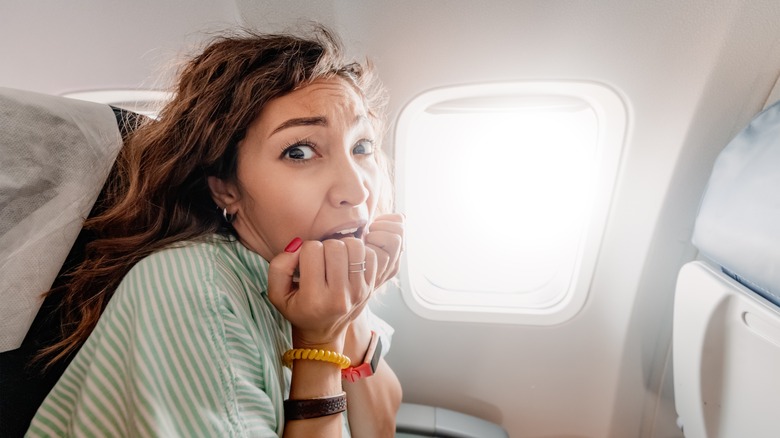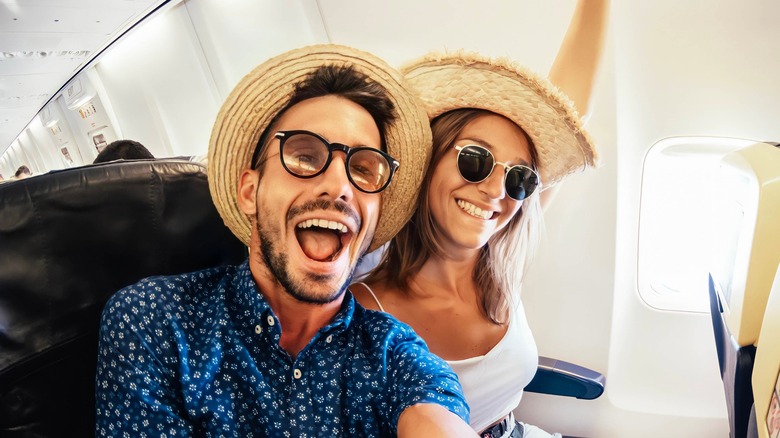How To Reduce Anxiety While Flying
Heading to the airport to hop a flight for a vacation or other adventure can be exciting, exhilarating, and full of joyful anticipation. But for a large percentage of the population, getting on a plane comes with significant fear and anxiety. According to the Washington Post, a whopping 40 percent of Americans report a fear of flying. For some folks, it's the fear of heights that gets them, while for others it's a lack of control. Some can't shake news stories involving plane crashes even though flying is, statistically, the safest way to travel (via Mental Floss).
In order to overcome this fear, depending on the severity of the anxiety involved, people invest in several different solutions. For some people, therapy can be helpful. Hypnosis is also an option, as is doctor-prescribed medication. But if you don't feel you need an intervention quite like these, there are several other ways you can reduce stress while flying and create a more relaxing experience for yourself.
Visualization
Visualization is a powerful strategy that you can begin using long before you actually board a plane (via Very Well Mind). As the date of your trip approaches, take a few minutes every day to sit still and quietly in a peaceful place, and breathe deeply. As you feel yourself start to relax, visualize a successful, safe, comfortable flight from beginning to end in as much detail as you can manage. For instance, takeoff can be a particularly frightening time for those who have anxiety around flying. To combat this, visualize yourself sitting in your seat and hearing all the sounds that usually come with takeoff, including the revving engines. Breathe through it, and visualize what you will see outside the window and around you as the plane ascends easily and successfully into the sky.
Imagine yourself sitting calmly as your turbulence-free flight continues, and then visualize the process of landing just as you did the takeoff. Next, see yourself disembarking happy and peaceful at your destination. Do this each day until your trip, and when you finally get into your seat on the plane, remind yourself of all the peaceful feelings you felt during your visualizations and know you are safe.
Other relaxation techniques
Deep breathing, meditation, and visualization are also useful techniques to use while on the flight. In order to remain focused on your breathing and your relaxation techniques, it might help to familiarize yourself with common airplane noises so that they don't jolt or frighten you (via Budget Travel). Ear plugs or noise cancelling headphones are also a great idea to help reduce stressful noise, whether from the airplane or from other passengers.
Healthy distractions are also a great way to get through a plane trip, and that can include books, magazine, audio books, music, movies, etc. (via Very Well Mind).
And if you find yourself fixating on your fear, it can help to interrupt those thoughts with facts. Remind yourself that fear does not necessarily equate to danger. After all, commercial passenger planes experience only one fatal accident for every 16 million flights (via Mental Floss). That makes flying far, far safer than any other mode of transportation you will ever take. You can do this!


